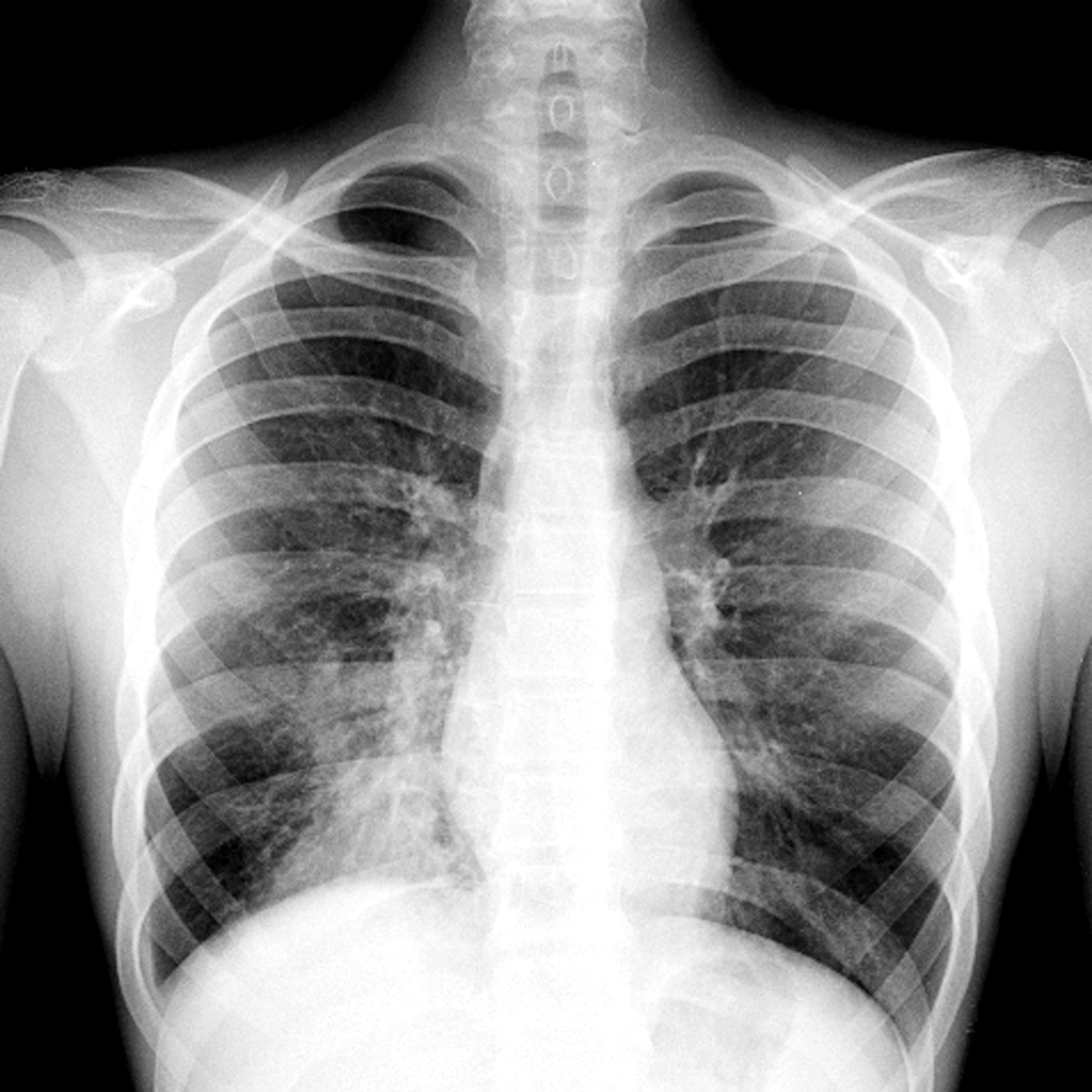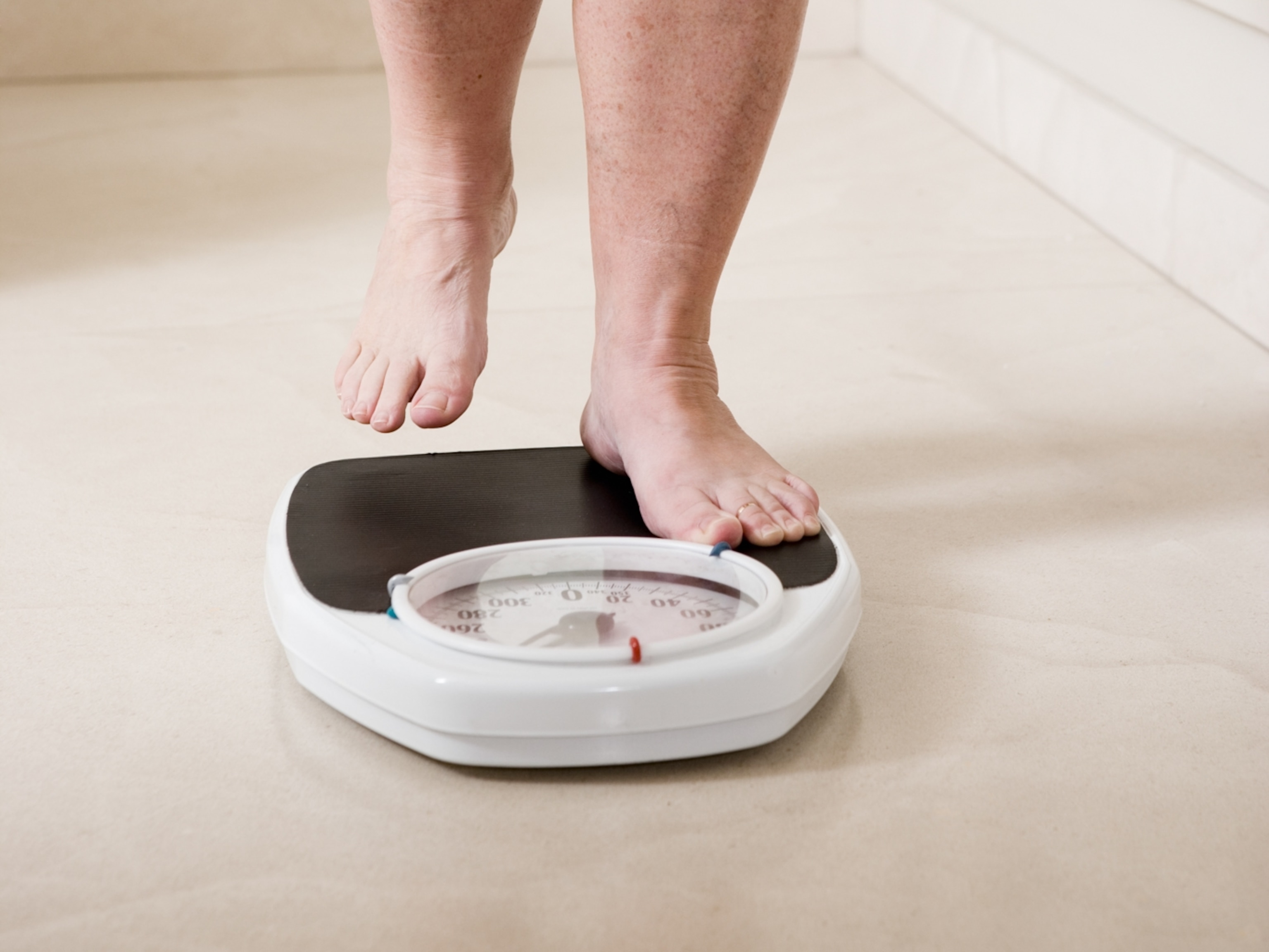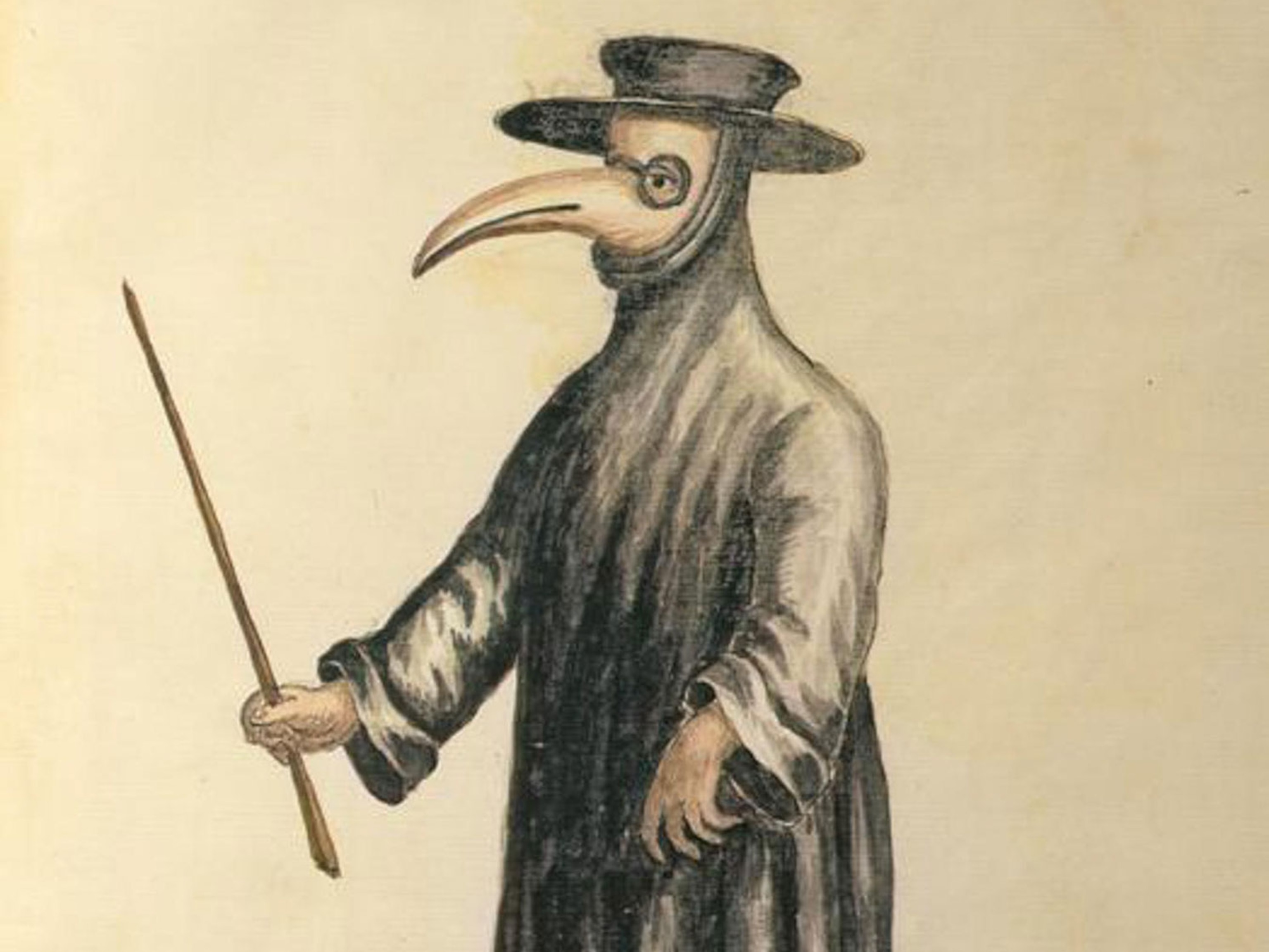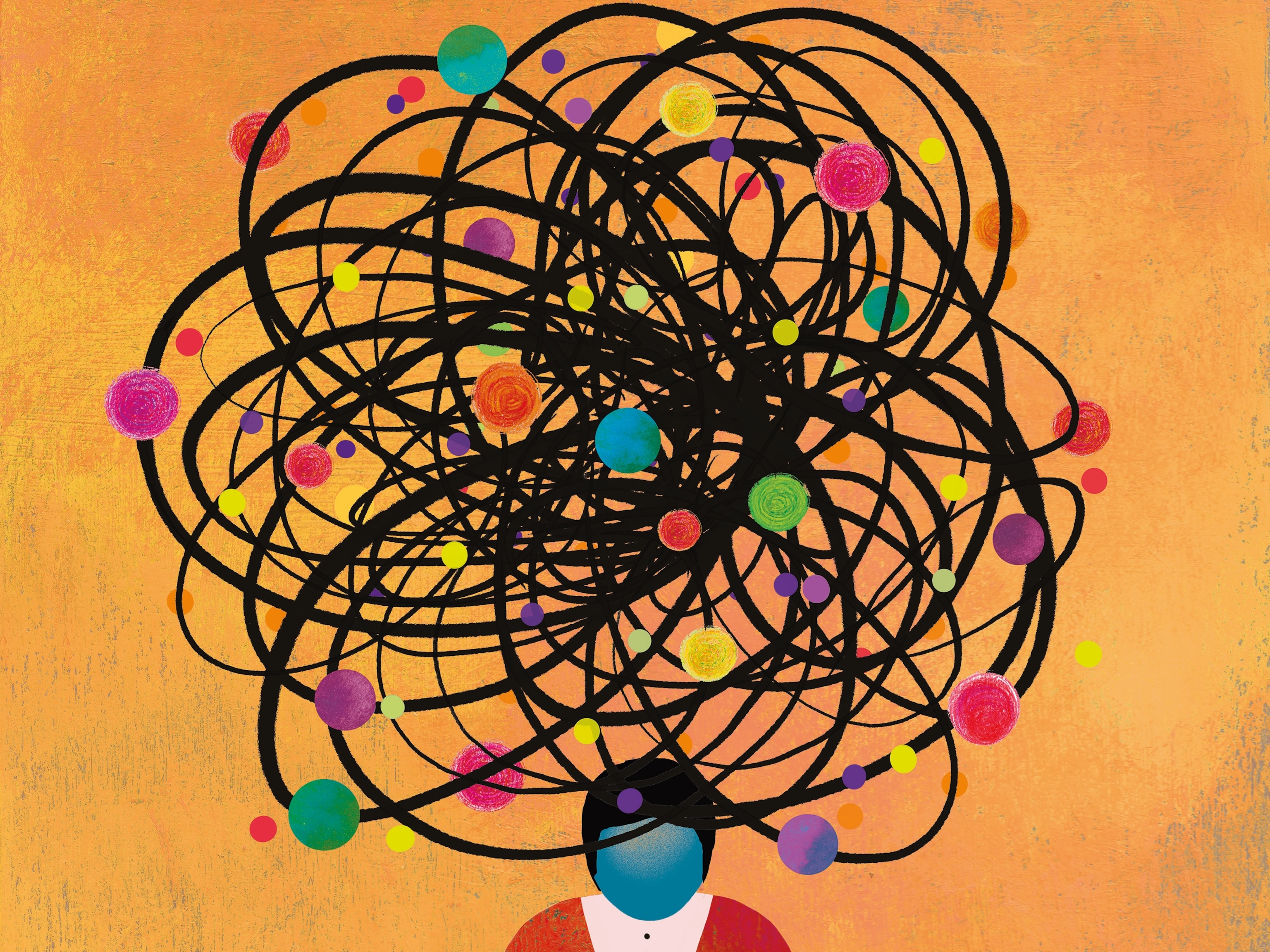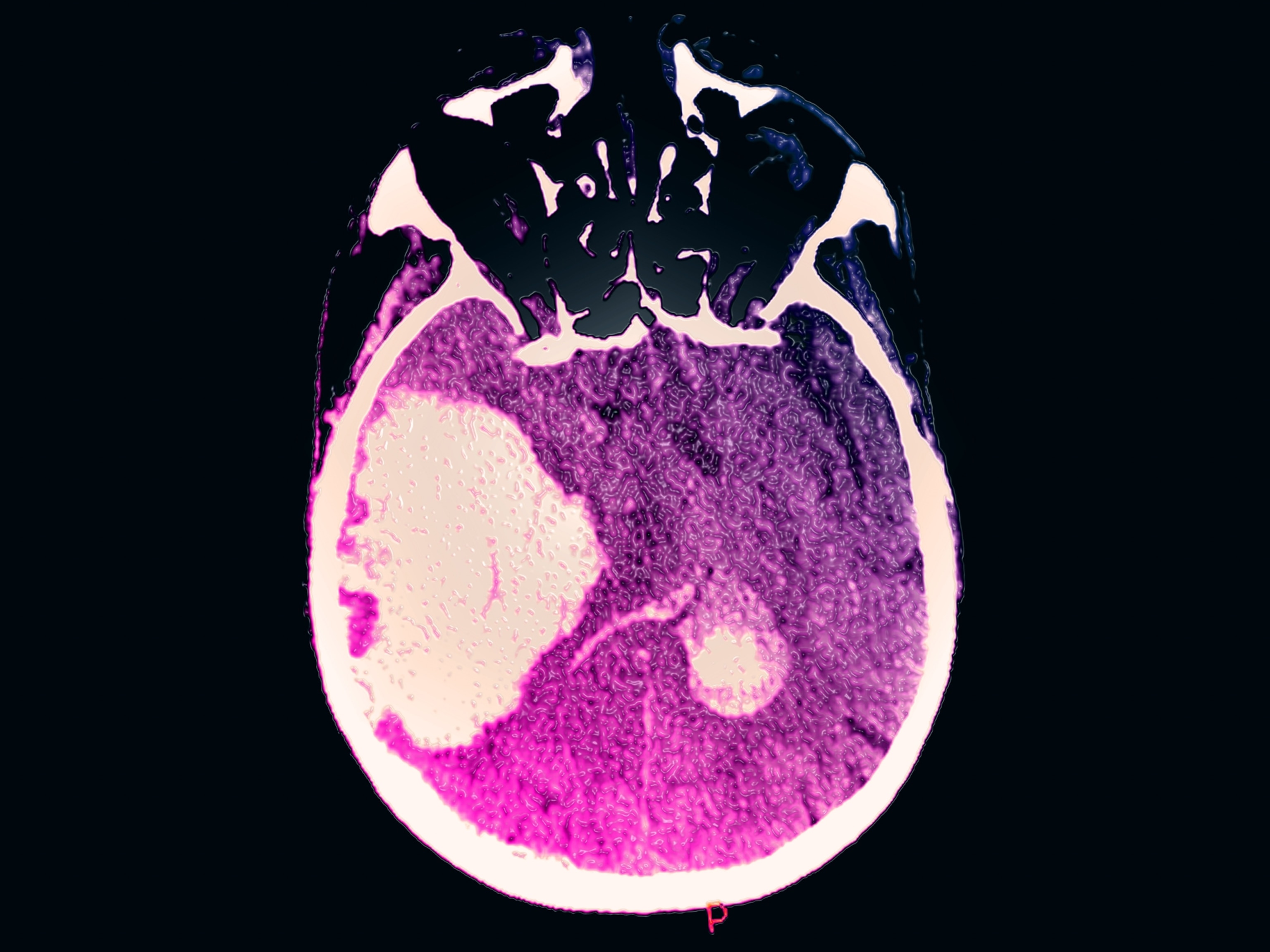
Photos show the first 2 years of a world transformed by COVID-19
Our photographers bore witness to the ways the world has coped—and changed—since the pandemic began.
Two years ago this month, on March 11, 2020, the World Health Organization formally declared a pandemic caused by a novel coronavirus. And as COVID-19 spread across the globe, humanity had little time to adapt to lockdowns and staggering losses.
Nearly six million people have died from the disease so far, a death toll that experts say barely scratches the surface of the pandemic’s true harm. Hospitals and health care workers have been pushed to the brink, debates over masking have tested our bonds, and millions of grieving families will never truly return to life as normal—if it’s even possible to go back to a time when “social distancing” was an alien concept.
Over past two years, National Geographic has documented how the world has coped with COVID-19 through the lenses of more than 80 photographers in dozens of countries. In the frightening early days, Cédric Gerbehave’s haunting image of Belgian nurses revealed the trauma of hospitals overrun by a disease that scientists didn’t yet understand. Tamara Merino confronted the overwhelming isolation of confinement during lockdown in Chile. And Muhammad Fadli took us to the gravesite of one of the many COVID-19 victims whose bodies filled up an Indonesian cemetery.
Our photographers have also shown us how the world adapted to these challenges. Families found new ways to connect when social distancing kept us from our loved ones, and new ways to grieve when we couldn’t hold funerals. Schools from Haiti to South Korea were able to safely reopen with mask mandates, smaller classes, and exams taken outdoors. And the 2021 graduating class of Howard University found a joyous way to celebrate commencement outdoors: by dancing down the streets of Washington, D.C.
Now, as we enter the pandemic’s third year, scientists warn that it isn’t over yet. More than 10 billion doses of COVID-19 vaccines have been administered globally—but that isn’t enough to quell the danger of future surges and even more deadly variants. Still, there’s reason to hope that we’ll finally find our way toward a new normal.
Many of these images were made with the support of the National Geographic Society's COVID-19 Emergency Fund for Journalists, which launched in March 2020 and funded more than 324 projects in over 70 countries. These projects revealed the social, emotional, economic, educational, and equity issues threatening livelihoods all over the world.

Physician Gerald Foret dons a full-face respirator mask before seeing COVID-19 patients at Our Lady of the Angels Hospital in Bogalusa, Louisiana. The mask was donated to the hospital when it was running low on disposable N95 masks. In the early months of the pandemic, health-care systems faced severe shortages of personal protective equipment such as face masks and disposable gloves—putting front-line workers like Foret in further jeopardy.

A baby is born at the only maternity hospital in Dagestan, Russia. Located on the southernmost tip of Russia along the Caspian Sea, the Muslim-majority republic suffered a catastrophic surge of coronavirus deaths in the spring of 2020. The losses in Dagestan raised questions about whether the Russian government was obscuring the pandemic’s true death toll.

Alfonso Sellano, age 64, battles COVID-19 while his wife and a nurse tend to him in Espinar, Peru. As of March 2022, the country has the highest COVID-19 death rate in the world, which experts say can be attributed to the country’s weak health-care system and pervasive social inequalities that make it difficult for marginalized people to protect themselves from the virus. For instance, many had to continue commuting to work even during lockdown in order to provide for their families.


Hours of work in a protective mask leave a transient scar down the face of Yves Bouckaert, the chief intensive care unit physician at Tivoli Hospital in La Louvière, Belgium.
Ghislaine, a nurse in the geriatric ward at the same hospital, poses for a portrait with a tear running down her cheek. These photos were taken during the third wave of COVID-19, which triggered a new round of lockdowns in March 2021.

In Mons, Belgium, nursing colleagues take brief refuge in a shift break and each other’s company. Like medical facilities around the world, Belgian hospitals were initially overwhelmed by the rush of patients with a virulent new disease. These nurses, pulled from their standard duties, were thrown into full-time COVID-19 work—reinforcement troops for a long, exhausting battle.

COVID-19 has posed a particularly grave threat to Africa’s informal urban settlements—communities with high poverty rates where millions of people live in close quarters and often do not have access to clean water or toilets. In Nairobi, Kenya, residents of the Kibera informal settlement have their temperature checked by community health workers at a station set up by Shining Hope for Communities on March 26, 2020.

Home health-care worker Delores Jetton bathes her client Jean Robbins in a sunlit bedroom. “She is slow and prayerful as she bathes each person, washing with warm water and a touch that is so appreciated by these elders, who often face pain and fear at the end of life,” writes photographer Lynn Johnson. “As the bath progresses, one can see Robbins literally surrender to the touch.”
Even with the availability of effective vaccines, people over 65 remain at high risk of dying from COVID-19. Many have been told to stay home rather than visit health clinics in person—causing a significant rise in demand for home health workers, who have often found themselves stretched to exhaustion in these past two years.

The mummified body of a COVID-19 victim lies on the patient’s deathbed awaiting a bodybag in Jakarta, Indonesia. It took two nurses about an hour to wrap the patient in plastic—a measure intended to keep the coronavirus from spreading. Indonesians were shocked when they saw this image, which humanizes the losses of COVID-19 and horror of death from the disease.
“It’s clear that the power of this image has galvanized discussion about coronavirus,” photographer Joshua Irwandi told National Geographic in July 2020. “We have to recognize the sacrifice, and the risk, that the doctors and nurses are making.”

At the Rayer Bazar graveyard in Dhaka, Bangladesh, Farid conducts the janazah, an Islamic funeral prayer, for a COVID-19 victim and his relatives attending the burial. Bangladesh designated the cemetery as its official burial place for COVID-19 victims in April 2020.

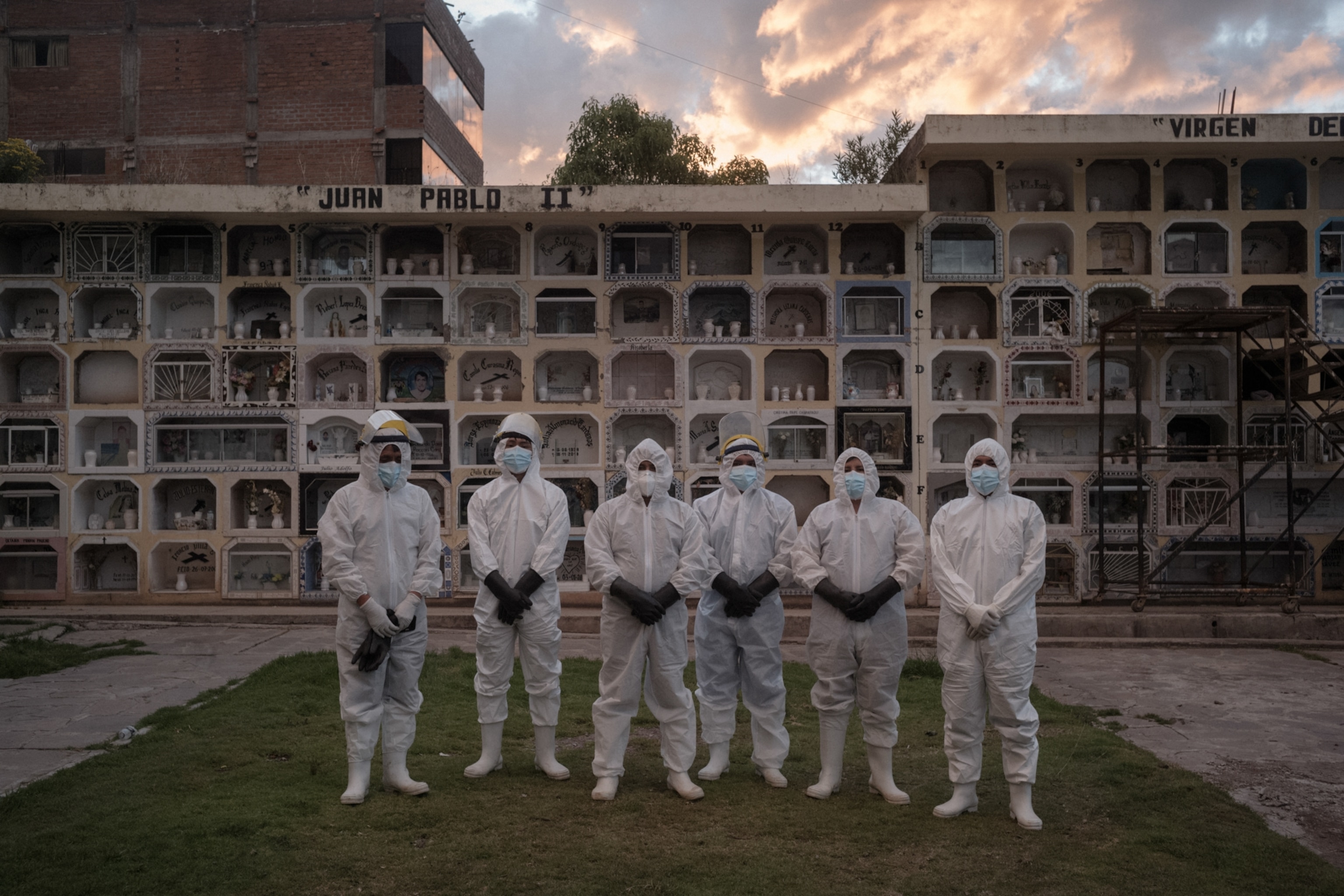
Defying Peruvian government protocols, the Shipibo-Konibo have organized illegal mourning and funerals during the pandemic to honor their dead as their tradition dictates. At the funeral of Milena Canayo, who died in July 2020 with symptoms of COVID-19, her 9-year-old daughter lights a candle before taking refuge at home. Shipibo-Konibo people live in the Amazon rainforest of Peru, including in cities like Pucallpa where Milena's funeral was held. But she was not treated at the local hospital—Ronald Suarez, head of the organization Coshikox, says the health and welfare of Indigenous people is always the last to be considered.
Workers from a funeral home in Huancavelica wait until the end of a service to move a coffin into a grave at a city cemetery in April 2021. Much like the rest of the country, this city in central Peru has been hit hard by the COVID-19 pandemic.

After keeping their social distance during the New York City funeral of Annie Lewis, family members draw together around the casket to say a final goodbye. In the United States, COVID-19 has been particularly devastating for low-income communities of color. As photographer Ruddy Roye told National Geographic, “The coronavirus pandemic has laid bare the divisions in our city.”

Relatives visit a loved one’s fresh grave at Rorotan Public Cemetery in Cilincing, North Jakarta, Indonesia, on July 21, 2021. The cemetery, which is dedicated to COVID-19 victims, opened in March. Even though it can hold up to 7,200 people, the cemetery filled up fast during the surge in cases caused by the Delta variant—which made Indonesia an epicenter of the pandemic. In response, Jakarta's government planned to add more land to the 25-hectare cemetery.

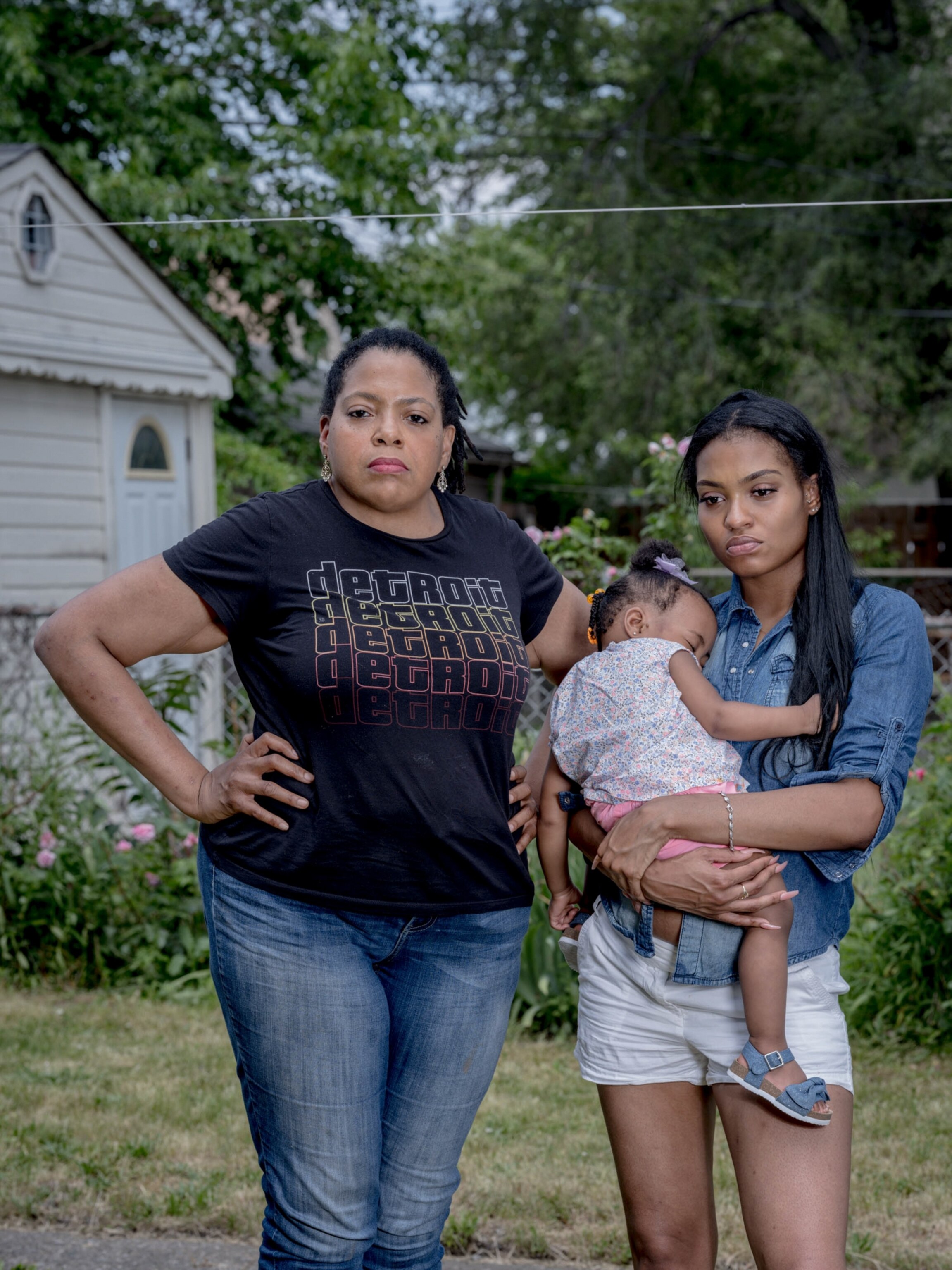
Elaine Fields, with her daughter Etana Fields-Purdy, stand close to her husband's gravesite at the Elmwood Cemetary in Detroit, on June 14, 2020. Eddie Fields, a retired General Motors plant worker, had died from COVID-19 complications in April. "It's hard because we haven't been able to mourn,” Elaine told photographer Wayne Lawrence. “We weren't able to be with him or have a funeral, so our mourning has been stunted."
Detroit journalist Biba Adams stands for a portrait at her home with daughter Maria Williams and granddaughter Gia Williams in Detroit on June 10, 2020. Adams lost her mother, grandmother, and aunt to the coronavirus. “To lose one’s mother is one thing,” Adams said in late July 2020, when U.S. pandemic death totals were pushing past 150,000. “To lose her as one of 150,000 people is even more painful. I don’t want her to just be a number. She had dreams, things she still wanted to do. She was a person. And I am going to lift her name up.”

Family members place flowers atop the coffin of Eric Hallett, 76, just before a hearse carries his body to the crematorium in Crewkerne, England, on May 4, 2020. Pandemic safety protocols forced the crematorium to limit the number of mourners at each funeral. Instead, Hallett’s loved ones lined the streets to wave goodbye.

Sisters Dana Cobbs and Darcey Cobbs-Lomax lost both their father and paternal grandmother to COVID-19 in April 2020. Evelyn Cobbs was rushed to the hospital in ambulances just one day after her son Morgan—and the two died within a week of one another. Photographer Celeste Sloman took this virtual portrait of the sisters, who had to say goodbye to their loved ones from a distance due to the restrictions of the COVID-19 pandemic.

White flags planted on the National Mall in Washington, D.C. represent each of the American lives lost to COVID-19. When the art installation opened in September 2021, the country had surpassed 670,000 deaths. For more than 30 hours, photographer and National Geographic Explorer Stephen Wilkes watched people move through the sea of white flags, capturing individuals as they grappled with the enormity of loss. Wilkes took 4,882 photographs of the exhibit, then blended them into a single composite image as part of his Day to Night series.

Kristiana Nicole Bell attends a candlelight vigil at St. Margaret of Scotland Catholic Church in Foley, Alabama, where she was baptized later that evening. The service, held the night before Easter Sunday, was led in both English and Spanish by Father Paul Zohgby. He decided about eight years ago that it was important to learn Spanish so he could welcome and minister to the community’s growing Latino immigrant population. Zohgby told photographer Natalie Keyssar that he was elated to rejoin his congregation in person after spending eight days in the hospital with severe COVID-19.

Quarantined for two weeks after traveling from Belgium to Shanghai, Justin Jin reads out his temperature to a medic on the other side of his closed hotel door. The picture was taken through the door’s peephole. Jin made the arduous journey to see his father, who just had surgery.

Photographer Ian Teh spends much of his working life on the road—so the pandemic allowed him to stay home with his wife, Chloe Lim, in Kuala Lumpur, Malaysia. “My partner and I are lucky that both our families are safe,” he says. “The pandemic has been an opportunity for us to connect with our loved ones, virtually.” He took this self-portrait of the couple in a favorite spot in their apartment, looking out on nearby houses and greenery. “It’s peaceful,” he says.

Heavy rain falls on Buenos Aires, Argentina, on April 27, 2020. Argentina entered a full lockdown on March 20 that endured more than four months. Feeling trapped, and still recovering from a miscarriage, photographer Sarah Pabst picked up her camera to document her pandemic experiences. The result: Morning Song, a project that uses photography to explore motherhood, love, and loss, and our connection with nature.

Greta Tanini and Cristoforo Lippi decided to take advantage of Italy's quarantine lockdown—to regard their enforced time together as a new exploration of their relationship. They divided up domestic tasks—including shopping, cleaning, and tidying up—and limited their social interaction to chatting with neighbors at a safe distance so as not to spread the virus.

The Apollo Theater has been a Harlem landmark since the 1930s, when it helped propel music genres such as jazz, R&B, and the blues into the American mainstream. The Apollo was one of New York City’s many historic entertainment venues that closed in early 2020 to stem the spread of COVID-19. It remained shuttered for a year and a half—and finally returned, to much excitement, in August 2021.

In spring 2020, sculptor Antonio Canova's The Three Graces (1812-1817) stand alone in the rotunda of Milan’s Galleria d’Italia. COVID-19 lockdowns forced museums across Europe to close their door for months—sparking fears that the loss of revenue might keep them permanently closed. By June, however, some museums began to reopen with limited numbers of visitors, temperature checks, and socially distant experiences.

Photographer Mariceu Erthal took this self-portrait in July 2020 during her first visit to the sea after being confined at home by COVID-19 lockdowns. She says the experience “brought me peace of mind and allowed me to observe the sadness and anxieties I had inside.”

Photographer Bethany Mollenkof found out she was pregnant three months before COVID-19 shut down swaths of the United States. She began to document her own experiences during quarantine in Los Angeles—from her first ultrasound, which her husband had to watch from the parking lot over FaceTime, to childbirth. Although Mollenkof had hoped for a natural birth, she decided to deliver in a hospital in case of complications—which proved the right choice. After her water broke, her contractions did not start, and ultimately labor was induced to keep the baby safe.
“I thought about my friends, my community, and what it would feel like to become new parents in isolation—to not have people around us to help, people who years later could tell our daughter that they’d held her when she was a few days old,” Mollenkof wrote in a photo essay for National Geographic. “But I also thought about women throughout history, women who have survived wars, pandemics, miscarriages. Their resilience guided me.”

Exhausted after giving birth to her daughter, Suzette, Kim Bonsignore lies in the birthing pool in her living room on April 20, 2020, in New York City. Instead of having her baby in the hospital as planned, the Bonsignores decided to have their second child at home when they learned that family members would not be allowed in the delivery room because of COVID-19 restrictions.

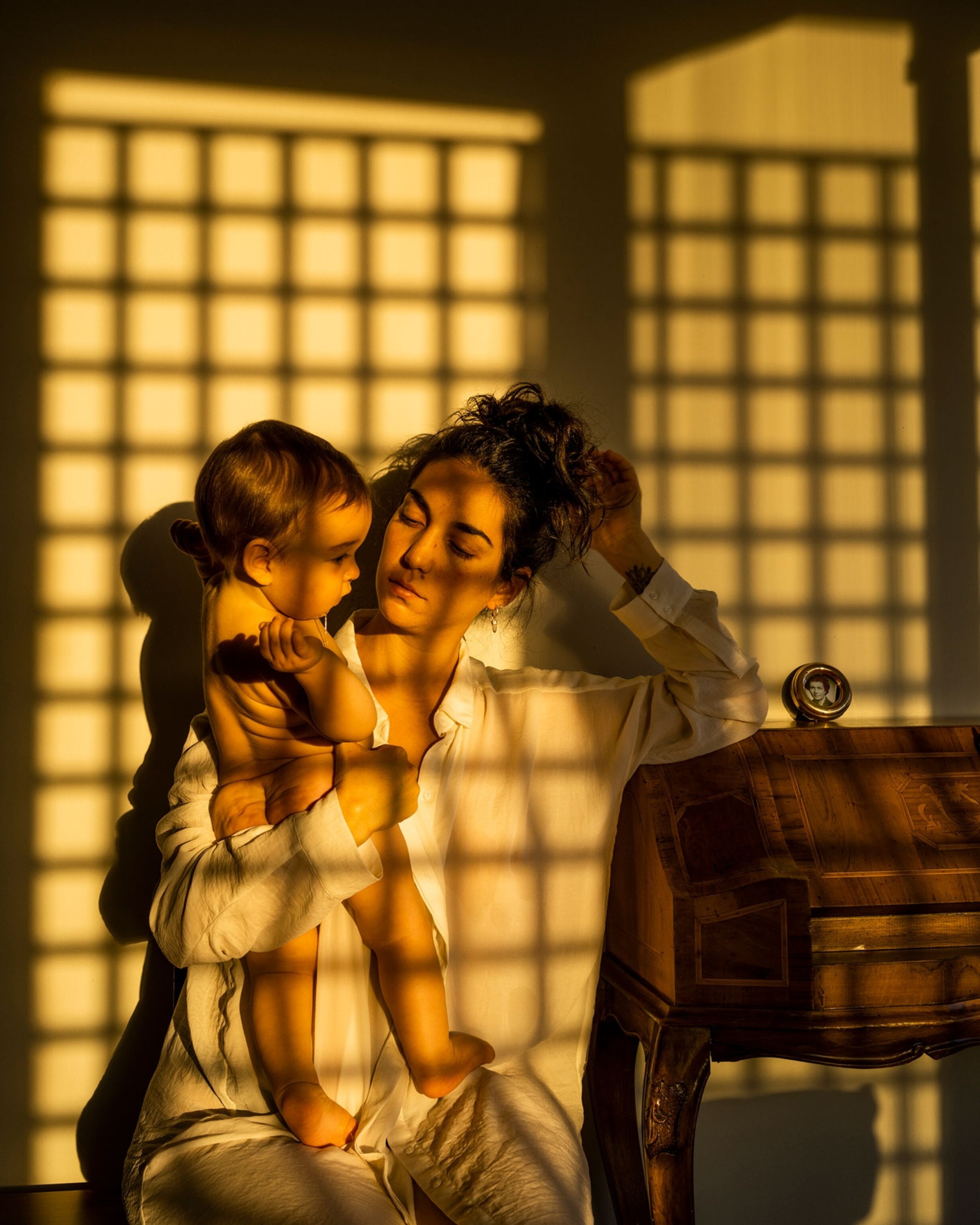
In Moscow, a nurse wearing a hazmat suit holds a bouquet of flowers for at Hospital No. 52 on March 9, 2020—or Victory Day. Russia’s most important national holiday commemorates the surrender of Nazi Germany in 1945. Although celebrations were more subdued because of the pandemic, the hospital arranged a small tribute for veterans and their families under treatment.
Photographer Tamara Merino took this self-portrait with her son Ikal on the first day of total isolation in Santiago, Chile. “The confinement feels stronger and more overwhelming when someone imposes it on you,” she wrote. “When we have freedom over our actions, and we decide to stay home, we still feel free. Not anymore.”

Image of customers seen through a thermal scanner at the entrance of a supermarket in Ushuaia, the capital of Tierra del Fuego, Argentina. The vast majority of food on the island is imported, and shopping is centralized in big supermarket chains—creating a challenge for social distancing. During lockdown, thermal scanners were placed in the supermarkets to take the temperature of incoming customers. Customers with elevated temperatures were sent home.

Girls form a socially distant queue to take a shower at a facility in Kibera, an informal settlement in Nairobi, Kenya. Most residents in the community do not have access to indoor plumbing, so a local organization provided free water to help prevent the spread of coronavirus by helping people maintain their personal hygiene.

An Istanbul city employee disinfects the streets of Beyoglu on April 14, 2020. Typically bustling with tourists intent on sampling its historic winehouses, museums, nightclubs and shops, the neighborhood fell quiet at the start of the pandemic. Many cities initially tried to curb the spread of the coronavirus by spraying their walkways with disinfectant—a practice that the World Health Organization ultimately recommended against, as the chemicals were likely to harm people’s health.

Migrants climb onto a truck which will take them toward their village on the outskirts of Lucknow, India, on May 6, 2020. When the Indian government announced a nationwide lockdown on March 24, it requested that people stay put, wherever they were. But that created a shortage of food for the huge migrant population in cities—so, after much deliberation and implementation of new public safety measures, state governments coordinated efforts to transport the migrants to their homes on special trains.

Students resume in-person classes at Elementary School No. 1 in Jakarta, Indonesia. More than 600 schools across the city reopened on a limited basis in fall 2021, offering face-to-face classes three days a week with strict health protocols in place. Schools also restricted the number of students who could attend in person, with half of each class still learning from home via video conference. Nadiem Makarim, the Indonesian minister of education, pushed for a return to classrooms, telling parliament that COVID-19 lockdowns caused “learning losses that have permanent impacts.”

In a Pétion-Ville high school, a student distributes handmade masks to his classmates before classes begin. The pandemic disrupted education for children everywhere—but the crisis was particularly dire in Haiti, where students have also suffered gaps in their education as a result of social unrest and natural disasters. The Caribbean nation reopened many of its schools in August 2020 with public health measures like masking in place.

Aspiring insurance agents sit for their qualification exams at desks spread apart on a soccer field in South Korea on April 25, 2020. The Korea Life Insurance Association and the General Insurance Association of Korea were among the many public and private institutions that introduced socially distanced exams during the pandemic. It was a very windy day, but more than 18,000 people across Korea took the insurance agent exam—happy that they had resumed after a hiatus of more than two months.

Eighteen-year-old Stephen Onyango (center) teaches his brothers Collins and Gavan while their sister Genevieve Akinyi watches at their home in Kibera. They hadn't been to class since the Kenyan government closed all schools in the country in mid-March to curb the spread of COVID-19. Stephen told photographer Brian Otieno that his teacher suggested an app he could use to teach his siblings. “It's my responsibility to ensure that my brothers are at home studying now that coronavirus is here with us and we don't know when this will end,” he said. Kenya reopened schools in January 2021, even as the pandemic continued to spread.

Members of the Phi Beta Sigma fraternity gather for an impromptu step dance after Howard University's commencement ceremony in Washington, D.C., on May 8, 2021. Only undergraduate students were allowed to attend the outdoor, in-person ceremony held at the university’s stadium. Friends and family scattered around outside of the stadium instead.
“As I was bouncing around campus, I started to think about how much the students had been through the past year and how this particular moment must feel for them,” said photographer Jared Soares. “To be able to witness the students' jubilation was a huge privilege, and even more meaningful based on the circumstances that we as a community had to endure the past year and a half.”

Seoulites lounge on picnic mats in the grass at Ttukseom Hangang Park on a late summer weekend in 2021. Located under ring-shaped entry and exit ramps leading to a bridge and an expressway, the park is a popular gathering spot for young and old alike.

Nadia, one of the hosts of the talent quest TV show Afghan Star, interviews masked young women at a taping on February 18, 2021. As the Taliban moved to retake national control, Afghan Star’s cast and crew came under serious threat—judges and participants had to stay at a safe house with armed security guards and blast walls until the end of the season. Kabul fell to the Taliban six months after this photograph was taken, leaving an uncertain future for Afghan women.

Berlin partygoers share a moment In a hallway of the Ritter Butzke, a venerable electronic music clubs, on August 28, 2021. Recently government-designated a German cultural institution, the Ritter Butzke—like other clubs with open air spaces—was approved last summer for public reopening. Some pandemic rules still apply: signs at the club urge patrons to wear masks and refrain from drinking on the dance floor.

Members of the Orquesta Sinfónica Gran Mariscal de Ayacucho play music from their new album, Sinfonía Desordenada (Disorderly Symphony), during an open-air performance on November 12, 2021 in Caracas, Venezuela. The album was recorded during the pandemic lockdown by 75 musicians who blended elements of classical music with Afro-Caribbean rhythms.

A boy flies his kite during lockdown in Amman, Jordan, in April 2020. For a few days in March, the government had imposed even tighter restrictions—shutting down nearly everything and instituting a 24-hour curfew backed up by tanks and army trucks, with no exceptions even to get food and medicine.
Amman is built on hills, and from his kitchen, photographer Moises Saman could hear the echoes of citywide sirens, the kind used for air raid warnings. He stayed inside with his family until the curfews began to ease. Then he went to find the places where refugees live, including the neighborhood where this photograph was taken. Despite fears that their crowded settlements and neighborhoods would lead to uncontainable spread of COVID-19, Jordan's strict lockdown kept the pandemic at bay during its early months. But as lockdown measures eased, cases began to surge by the fall—a warning to all countries to remain vigilant.



